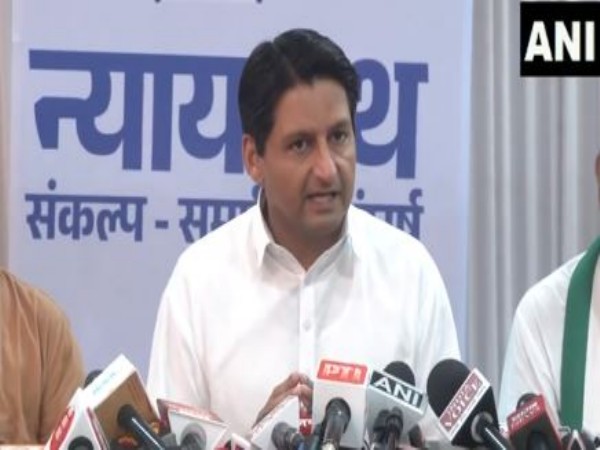Initiative aimed at 'Making Water Sensitive Cities in Ganga Basin' launched by Namami Gange
Jul 27, 2021

New Delhi [India], July 27 : With an aim to improve river's health and flow, a new capacity-building initiative on 'Making Water Sensitive Cities in Ganga Basin' was launched by National Mission for Clean Ganga (NMCG) in collaboration with Centre for Science and Environment (CSE) on Tuesday.
National Mission for Clean Ganga in collaboration with research organization launch initiative on 'Making Water Sensitive Cities in Ganga Basin'
The key focus areas of the programme will be Water Sensitive Urban Design and Planning, Urban Water Efficiency and Conservation, Decentralized Wastewater Treatment and Local Reuse, Urban Groundwater Management and Urban Waterbodies / Lake Management.
As per a statement from the Ministry of Jal Shakti, Water Sensitive Urban Design and Planning (WSUDP) is an emerging urban development paradigm aimed to minimise hydrological impacts of urban development on environment. This includes the method of planning and designing urban areas for optimum utilisation of water (a precious resource), reduce the harm caused to our rivers and creeks and focuses on entire management of entire water systems (drinking water, storm water run-off, waterway health, sewerage treatment and re-cycling).
In a virtual address, CSE Senior Director Suresh Kumar Rohilla shared that the aim of the program is capacity building and action research for promoting sustainable urban water management for improved river health in Ganga basin cities.
CSE Director General Sunita Narain highlighted the impact of climate change on rivers and hydrology. She shared that the intensity of rain has increased over the years but the number of rainy days has reduced, making water management a crucial subject. She emphasized the need of returning to roots and bringing back the traditional knowledge of rain water harvesting sharing the examples of Alhar - Pyne system of Bihar, wells in forts of Rajasthan and Cascade tanks of South India etc.
Ranjan Mishra, Director General of NMCG, reiterating the need for respecting traditions also suggested focus on the basics of water cycle in urban areas. He emphasised the need of protecting, conserving and restoring ecosystem and not just pollution abatement. He also shared insights about Jal Shakti Ministry's 'Catch the Rain' initiative for rain water harvesting. "There is a huge need for public spaces in urban spaces. What could be better than river fronts which connects community with water bodies in cities," he said.
An independent consultant from New Delhi presented a case study of a colony in Nizamuddin East through which 48, 531 cubic meters was harvested i.e. 39.6 per cent of total rooftop and surface runoff being harvested.
This initiative is part of the series of ongoing efforts by NMCG aimed to ensuring convergence of the Namami Gange Mission with national flagship urban missions (AMRUT, Smart Cities, Swachh Bharat Mission, HRIDAY, NULM) and other missions (Atal Bhujal Yojana, Jal Jeewan Mission, Jal Shakti Abhiyan) at state/city level across Ganga basin states.
Under this initiative there will be more than 40 training programs supported with development of learning material/ practitioner's guides and spread over a period of 3 years. This will include residential trainings, online trainings, field visits and webinars etc. Initially, the project will be implemented in 3-4 pilot cities in the Ganga basin. Technical support will be provided to urban local bodies (ULBs). This is the first of its kind capacity building program. More than 840 people participated in the event from 240 cities across 33 countries.


















